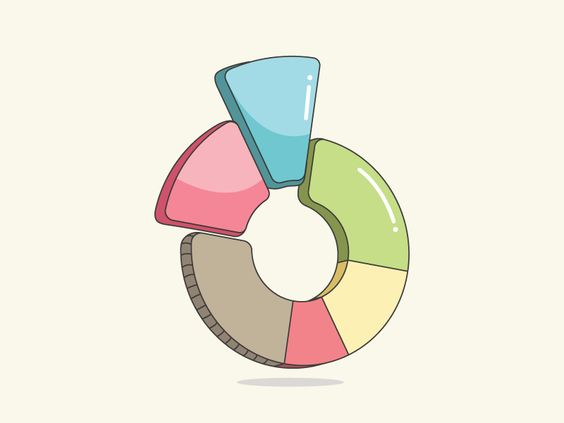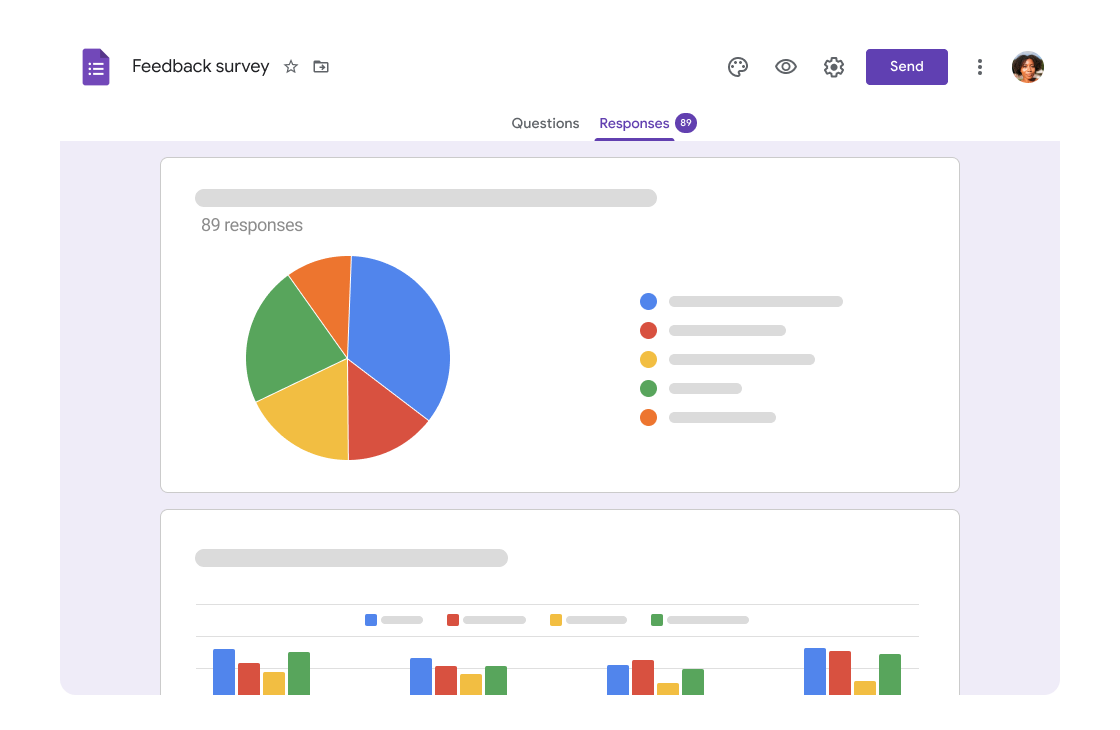The main aim of any survey is to meet individuals and record their responses, but what if you can’t meet them? You need to figure out a means to contact them, ask questions, and receive their responses. You are correct; in such circumstances, an online form like Google Forms can save your life.
But what if you’ve finished the surveys and are prepared to give your reports and presentations? How would you accomplish that without the survey’s graphs and charts? Google Forms is once more the solution.
With Google Forms, you can receive a summary of the responses as easy-to-copy graphs and charts, but if you need something a little more polished, you can use Google Sheets to make graphs and charts with the data from Google Forms appear more polished.
When comparing portions of a single data series to the entire series, use a pie chart. Compare, for instance, the number of new clients gained through various marketing strategies.
Do you want to know how to make a pie chart in Google Forms? This article will walk you through making a Google Forms pie chart. We also show an easier method for making pie charts using the results of your survey.
What is Pie Charts?
Said, a pie chart represents the structured information we need to make decisions. And it is utilized everywhere, even in classrooms and conference rooms. It is frequently criticized for being difficult to understand and compare when comparing various informational slices or pie charts. However, it remains a crucial piece of data for an in-depth examination. We’ll see how to make pie charts using Google Forms.
Can you use Google Forms to create pie charts?
Users have had the option of developing questionnaires and conducting online surveys for a long time, thanks to Google Forms. The forms can be used to carry out small to large-scale online surveys and give respondents the greatest degree of discretion in submitting their answers.
Google Forms still lags in modifications despite having a pre-built summary option that turns the responses into understandable charts and graphs. Users are not permitted to alter the graph’s titles or subtitles or to select the type of graph.
You may use Google Sheets to create custom charts using data from Google Forms. Because Google Sheets and Google Forms are integrated, Google Sheets can natively export the data from Google Forms and be used to create a variety of graphs and charts that can be altered in a variety of ways.
How To Create A Google Forms Pie Chart?
If you want to generate a pie chart from a Google Form, you must use Google Sheets to extract the data from it and utilize it to generate the pie chart. Use the instructions below to create pie charts using Google Forms.
The process to create a Google Forms Pie Chart:
- To construct the form or survey for which you require a pie chart, open Google Forms.
- Press send once the survey has been styled and created.
- After all, respondents have provided their responses, click “Responses.” In the top left corner of the 3-dot icon, click the Google Sheets button to continue. That will open a Google Sheets spreadsheet containing all of the respondent data.
- In Google Sheets, choose a column and scroll until you find the question’s cell.
- Now select “Insert” from the top toolbar.
- To create a chart, choose “Chart” under “Insert.” On occasion, clicking on it won’t immediately display a pie chart. Don’t stress over that. You can choose your charts, with a boxplot being one of the first and most popular choices.
- To customize the pie chart, select the “Customize” option and make the necessary changes.
Data formatting techniques
- Enter a label or category in the first column for each row.
- Enter positive numerical data in the second column. In the first row, you can also enter a label name (optional).
- Rows: Each row corresponds to a pie slice.
The label won’t appear in the chart if its value is negative or zero.
Customize a pie chart
- Open a Google Sheets spreadsheet on your PC.
- To alter a chart, double-click it.
- Click Customize on the right.
- Select a choice
Chart style: Modify the chart’s appearance.
Pie chart: Change the border colour, add a slice label or add a doughnut hole.
Edit or edit the title text for the chart and axes.
Pie slice: Alternate the colour of the slice or remove a slice from the middle.
Change the text and position of the legend.
Options to customize
Here you will get further options to customize.
Chart Style
You can alter the chart’s appearance using the chart style.
- You can alter the chart’s backdrop colour with this feature. You have the option of making it transparent by selecting none or by giving it a colour of your choosing.
- It allows you to select a single font for all of the numbers and letters that are displayed across the chart.
- Chart Border Color: You can choose the border colour around the chart. Dark grey 2 is the default colour. However, you can choose any other colour. The border of the graph is translucent when none is selected.
- Maximize – This will enlarge the chart to fill the space. When it is turned on, the chart will be maximized; when it is turned off, it will revert to its original size. The titles for the data may be positioned in one corner when the chart is maximized.
- When turned on, the 3D feature will convert a 2D chart into a 3D one, and when turned off, the reverse will occur.
Pie Slice
Each slice of the pie can be customized using Pie Slice.
- Slice Title – Usually shown as a drop-down menu with the names of the slices available. You can select the slice that you want to personalize.
- Colour: You can alter the slice’s colour to suit your tastes.
- Distance from Center – This will enable you to divide various slides from the middle. It can be used to highlight a particular slice.
Pie Chart
Here you will be able to customize how the Pie looks.
This is where you can change the Pie’s appearance.
- Punches a hole between 25% and 75% of the size of the pie in the middle, known as a “doughnut hole.”
- Allows you to customize the pie’s border with colour.
- Slice Labels can be added to the various slices to show which labels go with which.
- Label Font: Here, you can select the font style that you want to use.
- Label Font Size: Select a font size for the label; it might be large or tiny enough.
- Changes the label’s format with the Label Format command. You have the option of formatting it in Bold or Italics.
- Text Color – This feature lets you quickly alter the colour of every label’s text.
Legend
You can change the appearance of the titles used to denote pie sections using the Legend menu.
- Move the titles to other chart corners using the position option.
- It will let you alter the font used for the titles in the legend.
- Choose the font size for the legend that seems more comfortable to you.
- The titles are formatted as Bold or Italic in the legend format.
- Choose a single colour for the titles of the text.
Conclusion
You can now create competitive yet stylistic pie charts in Google Forms, especially because it enables the audience to comprehend information swiftly or to compare data to perform analysis quickly.
FAQ
Are pie charts from Google form accurate?
It is impossible to produce an organized and precise chart from a question with responses that are randomly distributed and include both words and numbers. But there shouldn’t be any cause for concern if you have the right questions and answers.
Can I use e Google Forms chart to create reports?
Yes, creating reports with a Google Forms graphic is handy. Google Forms uses the Google Analytics framework to guarantee data accuracy and can be combined with Google Sheets to create intricate and attractive graphs and charts.
Are there charts in Google Forms?
Yes, Google Forms provides pre-built summary charts that display a 2D chart-based summary of your responses. The charts, in summary, can be printed out and copied from the summary and pasted into any text or photo editing software.


